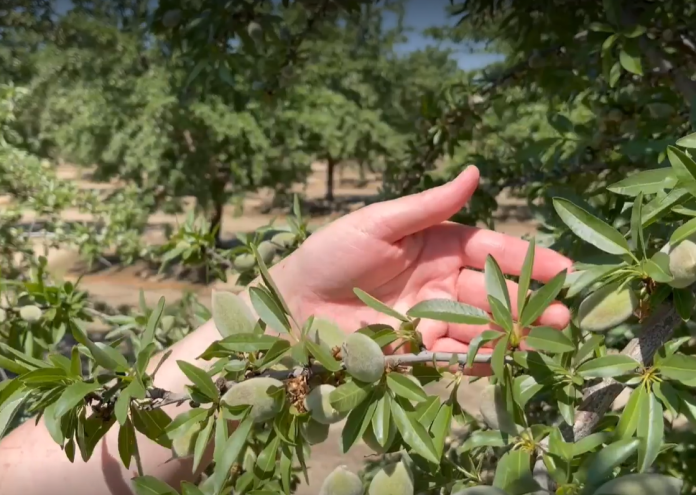

Foliar tissue analysis determines essential or toxic levels of nutrients in plants. The analysis is used to detect tree response to a fertilizer program and to determine if there are nutrient deficiencies or toxicities that need to be corrected.
When taking leaf samples to determine your orchard’s nutritional needs, it is important that the sample sent to the laboratory not only be a good representation of the orchard, but also be the right part of the plant.
Scott Fichtner of Precision Agri Lab in Madera said that analysis of leaves from a tree nut orchard can let you know where to focus nutritional efforts and adjust for nutritional deficiencies or toxicities. Leaf sample analysis may also be necessary to justify application of nitrogen.
Accurate analysis is difficult if the right parts of the plant are not submitted. Trees selected should be of similar age, variety, rootstock and vigor. Do not take leaf samples from a tree that appears weak in comparison to others in the orchard, Fichtner said. For example, leaves that are water deficient or have been damaged by spider mites should not be included in the sample. Their nutrient levels will be lower compared to healthy leaves.
Leaf tissue samples can be collected throughout the growing season; however, the least change in concentration occurs from late June to July. The UC guidelines are generally correlated to July leaf tissue samples.
Samples from almond trees taken March through April should be the most recently matured leaves from the base of the spur. Samples in May should be the most recently matured leaf from the tip of the spur. Samples taken from June through October should be the terminal leaf on the spur. Pistachio and walnut samples taken April to October should be terminal leaflets.
Fichtner said that to achieve a representative sample from a block of trees, leaves should be pulled from each of the four quadrants of an individual tree. Sample 20 to 25 trees in a block to achieve a composite sample of 80 to 100 leaves. Samples should be placed in a paper bag for delivery or shipment to the lab and protected from temperature extremes.
Proper sampling is an integral and vital part of foliar analysis. A common issue with leaf sampling, Fichtner said, is that the person tasked with pulling the samples has not received training. Precision Agri Lab has training videos available for pulling leaf samples.




















